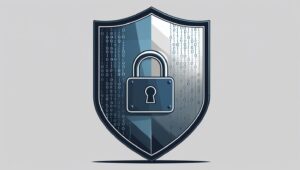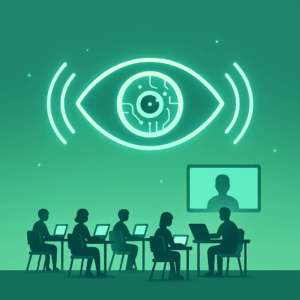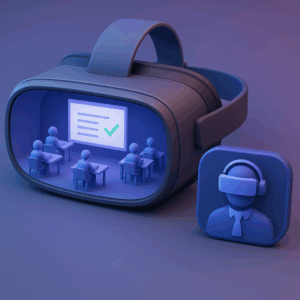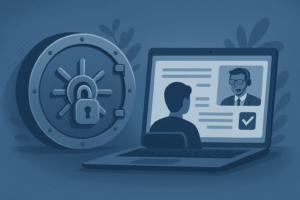In the modern educational environment characterized by the widespread impact of digital technology, the traditional model of in-person exams held in classrooms has experienced a significant metamorphosis. Introducing remotely proctored tests is a notable example of this trend and signals a paradigm change favoring flexibility and convenience for students and educational institutions. However, despite the growing acceptance of this kind of evaluation, a basic query emerges: what exactly is a remotely proctored exam, and what systems support its operation? This blog aims to investigate this emerging phenomenon carefully, revealing its working mechanisms and dissecting its complexities.
Understanding Remote Proctoring:
Examining remote proctoring reveals an advanced fusion of academic integrity and technical capability. Fundamentally, remote proctoring is an organized method that uses cutting-edge technology to supervise and manage online tests.
This complex procedure uses a range of digital instruments, such as webcams, microphones, and screen-sharing software, to enable test-takers to be remotely supervised in real-time. Proctors can prevent academic dishonesty by keeping a close eye on things and protecting the integrity of the examination process. Proactive actions like these preserve the integrity and validity of the evaluation by acting as a barrier against illegal activities like secretly communicating with peers or trying to obtain outside resources.
Types of Remote Proctoring:
- Live Proctoring: Live proctoring is a method of supervising online exams in real time using human proctors. During a live proctored exam, trained individuals monitor test-takers remotely via webcam feeds, audio channels, and screen-sharing software. The proctors observe the exam environment to ensure its integrity and adherence to exam guidelines. They are vigilant for any signs of cheating, such as attempts to access unauthorized resources or communicate with others during the exam. If suspicious behavior is detected, the proctor may intervene immediately to address the situation. Live proctoring aims to uphold the authenticity and fairness of the exam process while providing oversight comparable to traditional in-person examinations.
- Hybrid Proctoring: Hybrid proctoring combines elements of both in-person and remote proctoring methods to oversee online exams. In this approach, a human proctor supervises a portion of the exam in person. In contrast, another portion is monitored remotely using webcams and screen-sharing software. This hybrid model offers a flexible and scalable solution that combines the security of traditional proctoring with the convenience of remote assessment. It allows institutions to adapt to varying circumstances, such as limited physical space for in-person proctoring or the need for remote exams due to distance or other constraints. Hybrid proctoring can compromise the rigidity of traditional exams and the accessibility of online assessment, catering to the diverse needs of students and institutions alike.
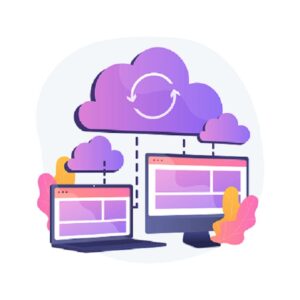
- Automated Proctoring: Automated proctoring monitors online exams using artificial intelligence (AI) algorithms and advanced technology. Instead of human proctors, automated proctoring relies on software to analyze test-takers behavior and detect any signs of academic dishonesty or irregularities during the exam. This technology can monitor various aspects of the test-taking environment, including eye movements, keyboard activity, background noise, and screen activity. Suppose the software detects suspicious behavior, such as looking away from the screen for an extended period or accessing unauthorized resources. In that case, it flags these instances for further review by human proctors. Automated proctoring offers a scalable and efficient solution for overseeing online exams, providing surveillance that complements traditional proctoring methods.
Benefits of Remote Proctoring:
- Flexibility: Remote proctoring allows students to take exams from any location with internet access, which is convenient for those with busy schedules or geographical constraints.
- Convenience: Students can schedule exams at their convenience, reducing the need for travel and eliminating the time constraints associated with traditional in-person exams.
- Cost Savings: Implementing remote proctoring solutions can save institutions money on facilities, staffing, and other logistical expenses associated with traditional exams.
- Enhanced Security: Remote proctoring employs technology to monitor test-takers in real-time, deterring cheating behaviors and ensuring the integrity of the exam process.
- Accessibility: Remote proctoring makes exams more accessible to students with disabilities or special needs by allowing for accommodations such as screen readers or extended time.
Challenges of Remote Proctoring:
- Technical Issues: Technical glitches or connectivity problems may disrupt students’ exam experience, leading to frustration and potential unfairness.
- Privacy Concerns: Remote proctoring requires access to students’ personal devices and living spaces, raising concerns about privacy and data security.
- Bias in AI Algorithms: Automated proctoring systems may exhibit bias in detecting suspicious behavior, leading to inaccurate results and potential discrimination against certain student groups.
- Cheating Countermeasures: Despite remote proctoring technology, determined students may still find ways to cheat by exploiting loopholes or utilizing external resources.
- Student Discomfort: Some students may feel uncomfortable or anxious being under the monitoring remotely, leading to decreased performance or a reluctance to participate in online exams.
Navigating these benefits and challenges requires careful consideration of technological capabilities, as well as consequences like ethical implications and student welfare, to ensure a fair and effective remote proctoring experience for all parties involved.
Summing up:
In conclusion, remotely proctored exams significantly advance online education and assessment. These exams provide flexibility, convenience, and enhanced security by leveraging technology to monitor test-takers remotely. However, to implement this approach effectively and ethically, it is essential to recognize the various types of remote proctoring and their benefits and challenges.

